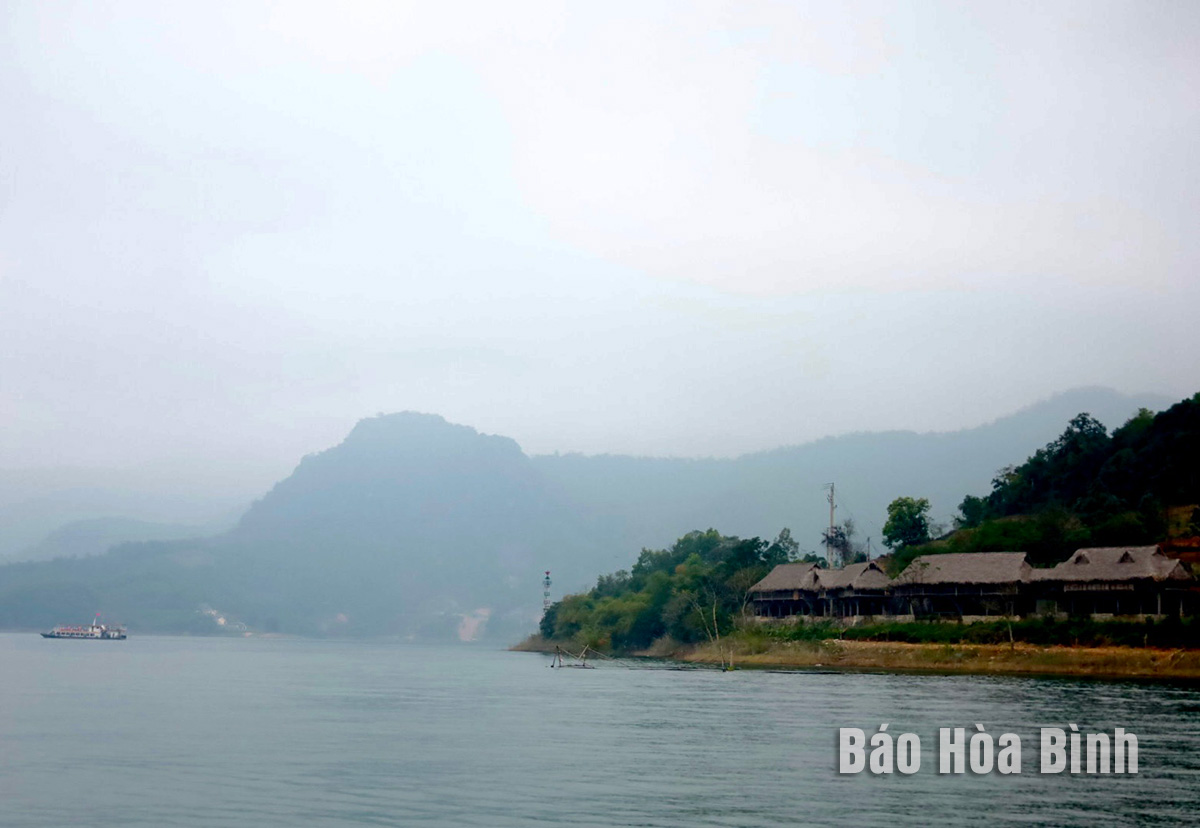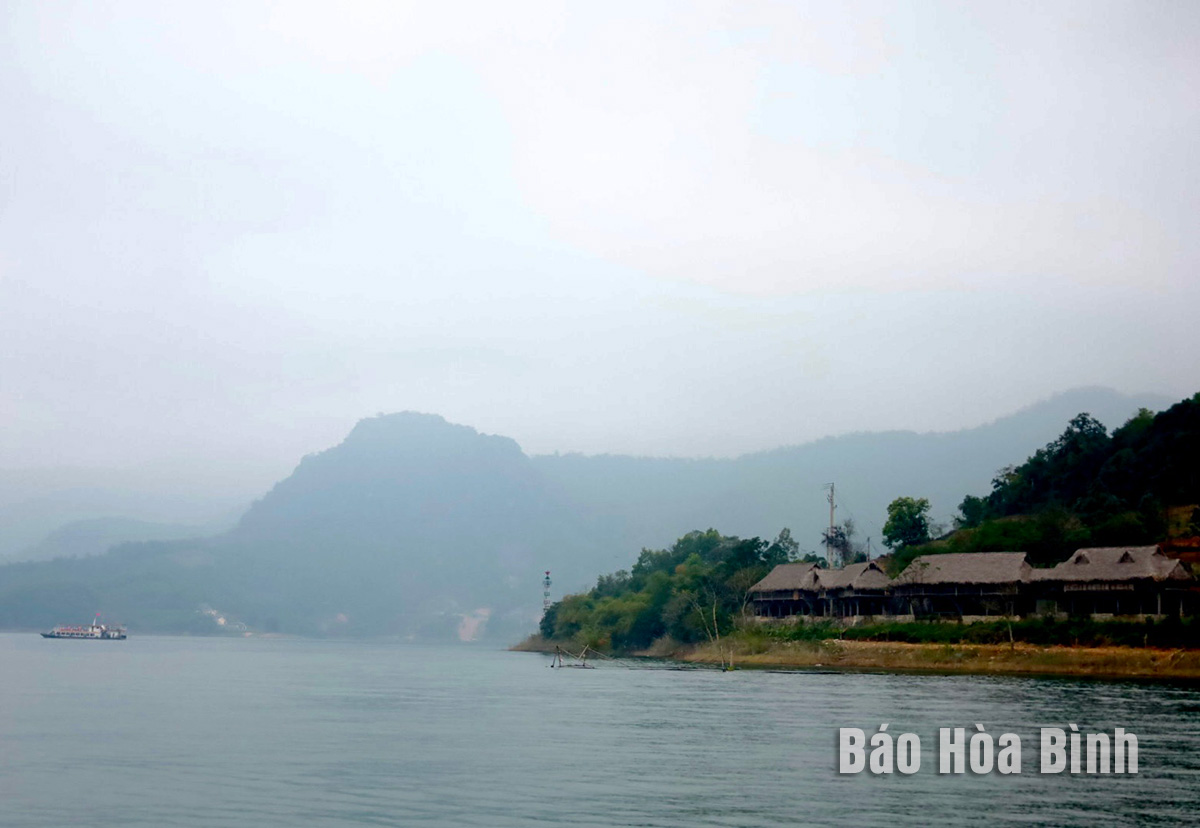
Included in the development masterplan of the Hoa Binh lake national tourist area, the lakebed communes in Da Bac highland district are rich in tourism development potential, particularly resort and community tourism.

5-star Robinson resort project in Tien Phong commune,
invested by Hoa Binh Tourism joint Stock Company, is being implemented as a
highlight in the system of ecological resort destinations in Da Bac lake.
In the past, the main source of livelihood of Tien Phong commune
locals was fishing and aquaculture. This job was not always favourable because
it depended on weather factors and environment. Difficult trade and travel conditions
directly affected consumption, market prices, and product output.
Since the implementation of tourism activities, people's
awareness, production and business thinking have seen many innovations. Instead
of only relying on cage fish farming, some households have opened homestay
businesses to serve tourists.
Currently, in addition to Da Bia, in the lake communes of the
district, there are many community based tourism points attracting tourists,
including Mo Hem village (now Doan Ket village) - Tien Phong commune, Sung
village - Cao Son commune, and Ke village - Hien Luong commune.
In particular, Sung village is the only Dao Tien one in the
province doing tourism. In addition to the majestic natural landscape, the
village also preserves the unique culture of customs, housing architecture,
writing, traditional crafts, costumes, and cuisine. This is one of the special
destinations attracting international visitors to visit and explore.
Not only strong in community based tourism, some investors have implemented
high-quality ecological and resort projects. The destinations have been put
into operation, including Mo Retreat, Xoan Village in Mo hamlet, Hien Luong
commune; Vayang Retreat in Van Nua commune; Maida Lodge in Tien Phong commune.
Particularly, the 5-star Robinson natural park project in Tien Phong commune
has carried out the construction of a number of important items.
Ban Kim Quy, Vice Chairman of Da Bac District People's
Committee, said nature and culture are valuable resources that the district is
exploiting and promoting to form a green, safe and attractive tourism
destination, contributing to creating jobs and sustainable livelihoods for
ethnic minorities living in lake communes.
In order to promote the development of local tourism
economy with lakebed tourism as a focus, the district has implemented many
solutions, including investing in and upgrading infrastructure such as roads
and electricity communications systems.
Located just a 20-minute drive from Hoa Binh City, Ora Hill Farmstay & Glamping Hoa Binh is a captivating new destination nestled in Mo hamlet, Bình Thanh commune, Cao Phong district. Combining farming with leisure, this tranquil retreat is perfect for those seeking balance, joy, and an immersive experience in the expansive beauty of nature.
Muong Bi - Tan Lac is renowned as one of the four famous Muong regions in Hoa Binh province. Blessed by nature with a favourable climate and stunning landscapes, Tan Lac holds great advantages for tourism development. The local tourism industry has made remarkable strides in recent times thanks to the attention and support from the local authorities and sectors.
With its strategic location, well-developed transport network, and diverse soil and climatic conditions, Hoa Binh is emerging as a must-visit destination in Vietnam's northwestern tourism corridor. The province boasts numerous attractions, including the Kim Boi hot springs (Kim Boi district), the Dau Rong cave complex (Cao Phong), the Mai Chau valley (Mai Chau), and the iconic Hoa Binh hydropower plant.
The northern mountainous province of Hoa Binh has been listed among the 71 most beautiful places to visit worldwide by the prestigious US travel magazine Condé Nast Traveller.
Hoa Binh province’s rich natural and cultural resources position it as a prime location for developing community-based tourism (CBT). In recent years, support from central and provincial policies, as well as assistance from non-governmental organisations, have encouraged local ethnic minority and mountainous communities to actively engage in the sector.



